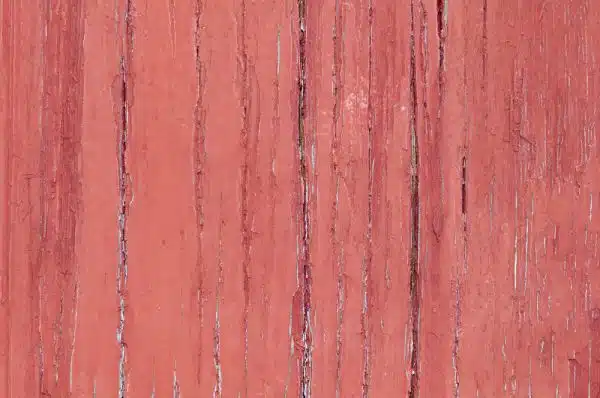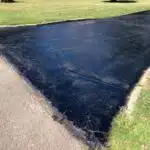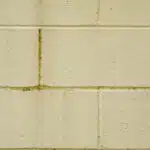As an outdoor wood finishing expert, I understand the importance of protecting your painted wood surfaces from the harsh elements of nature. Outdoor furniture, decks, and fences are subject to sun, wind, rain, and even snow that can cause damage to the painted finish over time. Without proper protection, the painted surface can peel, crack or fade, which will not only detract from the beauty of your piece but also reduce its lifespan.
In this article, I will share with you my professional tips and techniques for sealing painted wood for outdoor use. From selecting the right products to preparing your surface properly for application and providing ongoing maintenance tips to ensure longevity, I will cover all aspects of this essential finishing process. Whether you are a DIY enthusiast or a professional painter looking to enhance your skills set in outdoor wood finishing techniques, this article is for you. So let’s dive in!
Understanding The Importance Of Sealing Painted Wood For Outdoor Use
As an outdoor wood finishing expert, I have seen firsthand the importance of properly sealing painted wood for outdoor use. A well-sealed surface can provide protection against harsh weather conditions, UV rays, and moisture damage. However, in order to achieve maximum protection, it is important to understand the effectiveness of different sealing methods and test durability before application.
Testing durability is an essential step in assessing the effectiveness of a sealant on painted wood surfaces. While some sealants may claim to provide long-lasting protection, it is important to verify their claims through testing. Exposure to extreme weather conditions and humidity can help determine how well a sealant will hold up over time. By testing different sealing methods and comparing their effectiveness on painted wood surfaces, you can ensure that your finished product will withstand the elements.
When it comes to comparing the effectiveness of different sealing methods on painted wood for outdoor use, there are several options available. Some popular methods include using varnish or polyurethane coatings, oil-based sealers, or water-based sealers. Each method has its own advantages and disadvantages depending on factors such as cost, ease of application, and level of protection required. Ultimately, choosing the right method for your project will depend on your individual needs and preferences.
To assess your painted wood surface for sealing, it is important to thoroughly inspect it for any signs of wear or damage. Look for cracks or peeling paint that may need to be repaired before applying a sealant. Additionally, consider the type of paint used on the surface as certain types may require specific types of sealants or prep work before application. Taking these steps before sealing will ensure that your finished product provides optimal protection against outdoor elements while maintaining its aesthetic appeal.
Assessing Your Painted Wood Surface For Sealing
Before sealing your painted wood, it is important to assess the surface thoroughly to identify any imperfections that may affect the sealer’s performance. Start by ensuring that the paint has fully cured and has been allowed to dry for at least 24 hours. Next, inspect the surface for cracks, peeling or flaking paint, and any other signs of damage. These imperfections must be addressed before applying any sealer as they may reduce its effectiveness and longevity.
Once you have identified any flaws in your painted wood surface, you can then choose the appropriate type of sealer. There are different types of sealers available in the market, and each serves a specific purpose. For example, oil-based sealers are ideal for protecting against water damage while acrylic sealers offer excellent UV protection. Before selecting a sealer type, consider factors such as weather conditions in your area and how often you plan to reapply the sealer.
After choosing the right type of sealer for your painted wood surface, prepare it by sanding it with fine-grit sandpaper to create a smooth surface for priming and sealing. Apply a primer coat before sealing as it will help improve adhesion between the paint and sealer. When applying the sealer itself, decide whether to use clear or colored sealers depending on your personal preference. Clear sealers allow natural wood grains to show through while colored sealers add an extra layer of protection against UV rays and weather elements.
To ensure maximum durability and longevity of your sealed painted wood surface, keep up with regular maintenance by reapplying the sealer every few years or as needed based on wear-and-tear. In case of any troubleshooting issues such as bubbling or cracking of the sealer coat, gently sand off the affected area before reapplying another layer of primer and sealer. Regularly cleaning your sealed painted wood surface with a mild soap and water solution will also help maintain its weather protection.
Choosing The Right Type Of Sealer For Your Painted Wood
Assessing the painted wood surface for sealing is an important step in ensuring the longevity of your outdoor wood project. Now that you have determined your painted wood is ready for sealing, it’s time to choose the right type of sealer. There are two main types of sealers to consider: oil-based and water-based.
Both oil-based and water-based sealers have their advantages and disadvantages. Oil-based sealers are known for their durability and long-lasting protection against harsh weather conditions. However, they can be more difficult to apply and require longer drying times. Water-based sealers, on the other hand, are easier to apply and dry faster than oil-based sealers. They also offer better UV protection, which can help prevent fading of your paint job. Ultimately, the choice between an oil-based or water-based sealer will depend on your specific needs and preferences.
In addition to choosing between oil-based and water-based sealers, you must also decide whether you want a clear or colored sealer. Clear sealers work well if you want to maintain the natural color of your painted wood while still protecting it from the elements. Colored sealers can add a unique touch to your project by enhancing or altering the color of your painted wood. Keep in mind that colored sealers may require additional coats for optimal coverage.
Choosing the right sealer for your painted wood project is crucial in ensuring its longevity and maintaining its appearance over time. Consider factors such as durability, ease of application, drying time, UV protection, and color preferences when making your decision. In our next section we will explore further into choosing between oil-based vs. water based sealers: which is best for your project?
Oil-Based Vs. Water-Based Sealers: Which Is Best For Your Project?
When it comes to sealing painted wood for outdoor use, one of the most important decisions you’ll make is choosing between oil-based and water-based sealers. Understanding the pros and cons of each type can help ensure that you choose the right product for your project.
Oil-based sealers are known for their durability, making them a popular choice for outdoor projects. They are also resistant to water, which makes them ideal for use in areas where moisture is a concern. However, oil-based sealers do tend to yellow over time, which can affect the color of your paint job. Additionally, they can take longer to dry than water-based sealers.
Water-based sealers are typically easier to clean up than oil-based products and they tend to dry faster. They also don’t yellow over time like oil-based products do. However, they may not be as durable as their oil-based counterparts and may not provide as much protection against moisture.
When testing for compatibility with paint, it’s important to test both types of sealers on a small area before applying them to your entire project. This will help you determine whether there are any issues with adhesion or color changes that could affect the overall appearance of your project.
Next up: Understanding the Differences Between Clear and Colored Sealers
Understanding The Differences Between Clear And Colored Sealers
Clear sealers are popular for outdoor wood finishing projects as they offer protection against the elements without altering the natural color of the wood. However, colored sealers can add depth and character to your painted wood surface while also providing protection from UV rays and water damage. When choosing between a clear or colored sealer, consider the appearance you want to achieve and the level of protection required for your project.
Sealing techniques and tips are critical factors in ensuring that your painted wood surface is protected from harsh weather conditions. Before applying any sealer, it’s essential to ensure that the surface is clean, dry, and free of debris. Use a high-quality brush or sprayer to apply thin coats evenly, allowing each coat to dry completely before applying another layer. Don’t forget to sand lightly between coats for optimal adhesion.
When preparing your painted wood surface for sealing, it’s crucial to assess if there are any damages that need repair first. Check if there are any chips or cracks on the surface and address them accordingly before applying any sealer. Once you’ve repaired any damages, it’s time to clean and prepare your surface thoroughly using a power washer or sandpaper. This step will help ensure optimal adhesion and longevity of your chosen sealer.
Preparing Your Painted Wood Surface For Sealing
Before sealing your painted wood surface, it is crucial to evaluate the paint that has been applied to it. Check if the paint has fully cured, as newly painted surfaces must be given ample time to dry and harden before any sealant is applied. This not only ensures a good bond between the paint and the sealant but also prevents cracking or peeling of the paint in the future. Additionally, examine whether there are any scratches or dents on the surface that need to be fixed before sealing. By addressing these issues beforehand, you can enhance the durability and longevity of your finished product.
Choosing materials for sealing your outdoor painted wood surface requires careful consideration based on factors such as weather conditions, type of wood used, and personal preferences. For instance, water-based sealers may be ideal for painting projects that require quick drying times and less odor. On the other hand, oil-based sealers may offer better protection against harsh weather elements such as UV rays and moisture. It is also important to choose a sealer with an appropriate sheen level that complements your painted wood surface’s appearance while providing sufficient protection.
After evaluating your painted wood surface and selecting suitable sealant materials, you can proceed with sanding and cleaning it thoroughly. Sanding helps smooth out rough surfaces and remove any loose paint chips or debris that might affect the adhesion of your sealer. A clean surface not only ensures proper bonding between the sealer and painted wood but also improves its appearance after applying finishing touches. By following these steps carefully, you can significantly enhance the quality of your outdoor painted wood surface while protecting it from environmental damage for years to come.
Sanding And Cleaning Your Painted Wood Surface
After preparing your painted wood surface for sealing, it’s crucial to sand and clean the surface before moving forward. Did you know that roughly 50% of outdoor wood finishing issues stem from a lack of proper sanding and cleaning techniques? Neglecting these steps can lead to peeling, cracking, and chipping of the finish over time.
To avoid these issues, start by using a fine-grit sandpaper to gently sand the painted surface. Avoid using coarse sandpaper as this can damage the paint layer. Once sanded, use a tack cloth or soft-bristled brush to remove any debris or dust particles. For more stubborn dirt or grime buildup, consider using a gentle cleaning solution specifically designed for painted wood surfaces.
When cleaning your painted wood surface, be sure to avoid harsh chemicals or abrasive cleaners as these can damage the paint. Instead, opt for a mild soap solution or a specialized wood cleaner. Always test your cleaning solution on an inconspicuous area first before applying it to the entire surface. With properly sanded and cleaned painted wood, you’ll be ready to move on to applying primer in preparation for sealing your outdoor project.
Applying Primer To Your Painted Wood Surface
Choosing the right primer for your painted wood surface is crucial in ensuring a long-lasting finish. The type of primer you choose will depend on the type of paint you used and the condition of the wood. If you used oil-based paint, it’s recommended to use an oil-based primer, while water-based paints require a water-based primer. Additionally, if your wood has knots or stains, use a stain-blocking primer before applying your topcoat.
Common mistakes when applying primer include not allowing enough drying time between coats and not sanding the surface after priming. Waiting at least 24 hours between coats will ensure that the primer is fully dry before applying another coat or your topcoat. Sanding after priming will smooth out any rough areas and ensure that your topcoat adheres properly.
By applying a high-quality primer to your painted wood surface, you are creating a strong foundation for your topcoat to adhere to. The proper application of primer can make all the difference in achieving a professional-looking finish that is durable and long-lasting. Once you have properly primed your surface, you are ready to move on to applying sealer to protect your painted wood from outdoor elements such as sun, rain, and wind damage.
Applying Sealer To Your Painted Wood Surface
As the saying goes, “An ounce of prevention is worth a pound of cure.” This holds true when it comes to protecting your painted wood surface from outdoor elements. Applying primer is the first step in ensuring that your paint job lasts for years to come. The next crucial step is applying the sealer.
Sealing your painted wood surface can be done using various techniques. One technique involves using a brush to apply the sealer evenly over the entire surface area. Another technique involves using a sprayer to apply an even coat of sealer. The technique you choose will depend on personal preference and the size of the project.
Once you have applied the sealer, it is important to allow ample drying time before exposing your painted wood surface to outdoor elements. Depending on weather conditions, drying time can range from a few hours to several days. Be sure to check manufacturer’s instructions for specific drying times and avoid touching or moving the surface until it is completely dry. With proper sealing techniques and appropriate drying time, your painted wood surface will be protected and ready for outdoor use.
Techniques For Applying Sealer To Painted Wood Surfaces
Preparing the surface for sealing painted wood is essential; any debris, dirt, or foreign materials should be removed with a damp cloth.
Different types of sealers require different application methods, but all should be applied in thin, even coats and allowed to dry completely between coats.
It is important to use the correct tools to apply sealer, such as a paint brush, rag, or sprayer, depending on the type of sealer being used.
When applying a sealer, it is important to ensure that it is evenly distributed over the entire surface and that all areas, including corners, are covered.
Once the sealer has been applied and allowed to dry, it is important to inspect the surface for any imperfections or missed spots and to make any necessary touch-ups.
For a professional finish, the final step is to lightly sand the entire surface using a fine-grit sandpaper and apply a second coat of sealer if desired.
Preparing The Surface
Surface preparation is the first and most critical step in sealing painted wood for outdoor use. Before applying any sealer, it’s vital to ensure that the surface is clean, smooth, and free of any contaminants such as dirt, grease, or old sealants. One way to achieve this is by sanding down the surface with fine-grit sandpaper to remove any rough spots or bumps. Followed by cleaning the surface using a mild detergent solution and a stiff brush to remove all remaining dirt and debris.
Once the surface is clean and dry, it’s time to inspect for any cracks or gaps that need filling before applying the sealer. It’s essential to fill up these areas using wood filler and allow them enough time to dry completely before proceeding with sealing. Additionally, consider applying an oil-based primer on bare wood surfaces before painting them as it enhances adhesion and improves weather resistance.
Finally, after preparing the surface adequately, choose a high-quality sealant such as polyurethane or varnish that provides maximum protection against harsh weather elements such as rain, sun rays, and extreme temperatures. Apply two coats of sealer following manufacturer instructions, allowing enough drying time between each coat. By doing this right, you can be sure that your painted wood will last longer outside without fading or cracking due to exposure to harsh weather conditions.
Applying Sealer
As an outdoor wood finishing expert, I cannot overemphasize the importance of applying sealer to painted wood surfaces. It is one of the best practices that will guarantee your painted wood lasts longer outside without fading or cracking due to exposure to harsh weather conditions. However, as simple as it may sound, there are common mistakes people make when applying sealer that can render all their preparation efforts futile.
The first and most crucial step in applying sealer to painted wood surfaces is selecting the right type of sealant. There are various types of sealants available in the market, each with its unique properties and application methods. The best practice is to choose a high-quality sealant such as polyurethane or varnish that provides maximum protection against harsh weather elements such as rain, sun rays, and extreme temperatures. Be sure to read and follow manufacturer instructions carefully.
Once you have selected the appropriate sealer for your painted wood surface, the next step is applying it correctly. Common mistakes people make include not allowing enough drying time between coats, not following manufacturer instructions on how to apply the sealer, and failing to pay attention to areas prone to moisture buildup such as corners and joints. To avoid these mistakes, ensure you apply two coats of sealer following manufacturer instructions and allow enough drying time between each coat. Also, pay close attention to joints and corners where water can accumulate easily by applying extra layers of sealer in these areas.
Finishing Touches
As an outdoor wood finishing expert, I have seen many painted wood surfaces that have been damaged due to a lack of appropriate finishing touches. While applying sealer is essential for protecting the wood from harsh weather conditions, it is not the only factor that determines the longevity of your painted wood surface. There are other techniques you can use to add more durability and color options to your painted wood surface.
One way to add more durability to your painted wood is by sanding down the surface before applying sealer. Sanding helps remove any rough edges or paint residue that could potentially damage the sealer over time. Additionally, it provides a smooth surface for even application of sealant. Another technique is adding a tinted color stain to your sealer, which not only enhances its aesthetic appeal but also adds an extra layer of protection against harmful UV rays.
Finally, one of the most important finishing touches you can provide for your painted wood surface is regular maintenance. Even with a good quality sealer and additional finishing techniques, exposure to harsh weather elements can still take a toll on your painted wood surface over time. Regular cleaning and reapplication of sealant will go a long way in preserving both the look and durability of your outdoor painted wood surfaces. By following these techniques when applying sealer and providing proper finishing touches, you can ensure that your outdoor painted wood surfaces remain beautiful and durable for years to come.
Maintaining Your Sealed Wood Surface
After sealing your painted wood for outdoor use, it is important to properly maintain the surface to ensure longevity and prevent damage. The first step in maintaining your sealed wood surface is regular cleaning. Dirt and debris can accumulate on the surface of the wood over time, leading to discoloration or even mold growth. Use a soft-bristled brush or cloth to gently remove any debris from the surface of the wood.
In addition to regular cleaning, it is important to prevent any potential sources of damage to your sealed wood surface. This includes avoiding placing heavy objects on the surface that could scratch or dent it, as well as protecting it from extreme weather conditions such as prolonged exposure to direct sunlight or heavy rain. If possible, consider covering your sealed wood surface with a tarp or other protective covering during times of inclement weather.
By properly maintaining your sealed wood surface and preventing any potential sources of damage, you can ensure that it will last for years to come. However, even with regular maintenance, it may be necessary to reapply sealer after a certain amount of time has elapsed. In the next section, we will discuss how often you should plan to reapply sealer to your painted wood surface based on various factors such as climate and usage patterns.
How Often To Reapply Sealer To Your Painted Wood Surface
Maintaining your sealed wood surface is crucial to ensure its longevity and effectiveness. However, even with proper maintenance, the sealer will eventually wear down due to exposure to the elements. This is why it’s essential to know when and how often to reapply the sealer.
The frequency of reapplication depends on various factors such as the type of sealer used, weather conditions, and exposure to sunlight. In general, it’s recommended to reapply the sealer every two years. However, if you notice signs of needing reapplication such as water not beading up on the surface or a dull appearance, then it’s time for a fresh coat.
When reapplying the sealer, ensure that you thoroughly clean the surface beforehand using a mild detergent and water. Allow it to dry completely before applying an even coat of sealer with a brush or roller. It’s important not to over-apply as this can lead to bubbling and cracking of the surface. With proper maintenance and timely reapplication, your painted wood surface can remain protected from outdoor elements for years to come.
Moving forward, let’s discuss some tips for protecting your sealed wood surface from the harsh elements that can damage its integrity over time.
Tips For Protecting Your Sealed Wood Surface From The Elements
- Keeping your outdoor wood surface clean is essential to prevent the buildup of dirt and other environmental contaminants that can damage the finish over time.
- Applying a sealer to your wood surface will help protect it from water damage and prevent fading due to sun exposure. It is important to reapply the sealer regularly to ensure maximal protection.
- To further protect your wood surface from the elements, consider applying a protective coating such as varnish or polyurethane.
- This protective coating will help to provide additional protection from the sun, water, and other environmental contaminants.
- Ensure that the protective coating is applied evenly and without any gaps or air bubbles to ensure optimal protection.
- Allow the protective coating to dry fully before exposing the wood to the elements to ensure maximum protection over time.
Clean The Wood
Ensuring your painted wood surface is properly cleaned before sealing it for outdoor use is crucial to achieving a long-lasting finish. Removing stains and preventing mold growth are two key factors in maintaining the integrity of your sealed wood surface. In this article, we’ll take a closer look at how you can clean your painted wood surface effectively.
Before starting, make sure the wood is completely dry. Begin by removing any dirt or debris using a soft brush or cloth. If there are stains on the surface, use a solution of mild dish soap and warm water to gently scrub the area with a soft-bristled brush until the stain is removed. For tougher stains like oil or grease, consider using a specialized cleaner formulated for outdoor wood surfaces.
Preventing mold growth is also critical in protecting your sealed wood surface. To prevent mold from developing, ensure that the wood is not exposed to moisture for extended periods of time. Additionally, consider applying a mold inhibitor after cleaning to help keep your painted wood surface looking its best all year round. By following these tips, you can be confident that your painted wood surface will be well protected against harsh outdoor elements and maintain its beauty for years to come without requiring frequent maintenance or resealing.
Seal Regularly
To ensure that your sealed wood surface is well protected from the harsh outdoor elements, it’s crucial to follow regular maintenance and best practices. One of the most important tips for maintaining a long-lasting finish on your painted wood surface is to seal it regularly. This will help prevent moisture from seeping into the wood and causing damage over time.
Regular sealing can also help protect against UV rays, which can cause fading and discoloration over time. To get the most out of your sealant, make sure to follow the manufacturer’s instructions carefully. Some sealants may require multiple coats, while others may need to be reapplied every few years.
In addition to regular sealing, it’s important to keep an eye on your wood surface for any signs of wear or damage. If you notice any cracks or splits in the wood, be sure to address them right away before they become more severe. By following these tips and staying proactive in your approach to outdoor wood finishing, you can enjoy a beautiful and long-lasting finish on your painted wood surface for years to come.
Use Protective Coatings
Protecting your sealed wood surface from the elements requires more than just regular sealing and maintenance. Using protective coatings is a crucial step in ensuring that your outdoor wood finishing lasts for years to come. Coatings provide an extra layer of protection against moisture, UV rays, and other environmental factors that can cause damage to your wood surface.
The benefits of using coatings are numerous. They can extend the life of your finish, prevent discoloration and fading, and help maintain the natural beauty of your wood surface. Additionally, some coatings offer added features like slip-resistance or antimicrobial properties, which can be particularly beneficial in areas with heavy foot traffic or exposure to moisture.
However, it’s important to note that coatings also have their limitations. Some may require frequent reapplication to remain effective, while others may not be suitable for certain types of wood or finishes. It’s important to carefully consider the type of coating you use and follow the manufacturer’s instructions for best results. Ultimately, by using protective coatings in conjunction with regular maintenance practices, you can ensure that your sealed wood surface remains beautiful and protected for years to come.
Common Mistakes To Avoid When Sealing Painted Wood For Outdoor Use
To ensure the longevity of your painted wood surface, proper sealing is crucial. Many individuals make mistakes when sealing their painted wood surfaces for outdoor use that can lead to peeling and other issues. One of the most common mistakes is not allowing enough time for the paint to dry fully before applying the sealant.
Proper drying time is essential to ensure that the paint adheres correctly to the surface. If you apply a sealant before the paint has had sufficient time to dry, it will trap moisture beneath the surface, leading to peeling and other issues. Make sure you follow the manufacturer’s instructions for drying times or consult with an expert in outdoor wood finishing.
Another mistake that many people make when sealing their painted wood surfaces is not properly cleaning and preparing the surface beforehand. Dirt, dust, and debris can prevent proper adhesion between the paint and wood surface, leading to chipping and flaking over time. Before applying any sealant, make sure you clean and sand down your painted wood surface thoroughly.
Preventing peeling and other issues with sealed painted wood surfaces requires attention to detail and proper technique. By avoiding common mistakes like skipping proper drying time or neglecting to prepare your surface adequately, you can ensure a long-lasting finish that will withstand even harsh outdoor conditions for years to come. However, in some cases, even with proper preparation and sealing techniques, issues may arise. In those situations, troubleshooting and repairing common issues with sealed painted wood surfaces becomes necessary.
Troubleshooting And Repairing Common Issues With Sealed Painted Wood Surfaces
As an outdoor wood finishing expert, I have seen some truly remarkable sealing mistakes made by even the most well-intentioned DIY enthusiasts. From applying sealant in the wrong weather conditions to using the wrong type of sealant for the job, there are plenty of ways to mess up a perfectly good paint job. However, fear not! With a few simple troubleshooting techniques, you can fix common issues with sealed painted wood surfaces and keep your outdoor furniture looking flawless for years to come.
One of the most common issues with sealed painted wood surfaces is peeling or cracking. This can be caused by any number of factors, from poor surface preparation to using low-quality paint or sealant. If you find that your paint is peeling or cracking, start by sanding down the affected area and removing any loose flakes. Then, apply a fresh coat of high-quality paint or sealant and allow it to dry completely before using your furniture again.
Another issue that many people encounter when sealing painted wood for outdoor use is fading or discoloration over time. This can be caused by exposure to sunlight, moisture, or other environmental factors. To prevent this from happening, consider using a UV-resistant sealant or adding a protective layer of wax over your paint job. Additionally, make sure to clean and maintain your furniture regularly to prevent dirt and grime buildup that can cause discoloration over time.
- Use high-quality paint and sealant products specifically designed for outdoor use.
- Allow sufficient time for each coat of paint or sealant to dry completely before adding additional layers.
- Apply sealant in optimal weather conditions (moderate temperature and low humidity).
- Regularly clean and maintain your furniture to prevent dirt buildup.
- Consider investing in UV-resistant sealants or protective wax coatings for added protection against sun damage.
With these troubleshooting techniques and preventative measures in mind, you’ll be able to enjoy your beautifully sealed painted wood furniture outdoors without worrying about common issues like peeling, cracking, or fading. Remember to always use high-quality products and proper application techniques for the best results, and don’t be afraid to seek advice from a professional if you’re unsure about any aspect of the sealing process.
Conclusion
Sealing painted wood for outdoor use is a crucial step in ensuring the longevity and beauty of your outdoor furniture, decks, and other wooden surfaces. Neglecting this important task can lead to costly repairs or replacements. As an outdoor wood finishing expert, I cannot stress enough the importance of assessing your painted wood surface and choosing the right type of sealer for your project.
Choosing between oil-based and water-based sealers, clear or colored sealers, and understanding how often to reapply sealer can be overwhelming. However, with proper knowledge and technique, sealing painted wood for outdoor use can be a breeze. Remember to protect your sealed wood surface from harsh weather conditions by covering it up or using protective covers. And finally, avoid common mistakes like applying too much sealer or failing to clean the surface properly before sealing.
In conclusion, sealing painted wood for outdoor use is not just a luxury but a necessity for maintaining its life and beauty. As an expert in outdoor wood finishing, I urge you to take this task seriously and follow the tips outlined in this article to ensure that your painted wooden surfaces stand the test of time against the elements. Don’t let neglecting this important task lead to costly repairs or replacements; take action today to protect your investment!
Image Credits
- “Red Painted Wood” by stockerre (featured)








![How To Repair Rotted Wood 8 Texture : Altario Buick Estate Wagon : Rotting Faux Wood Paneling [1 of 2]](https://green-life.blog/wp-content/uploads/2023/05/z1CersK-gCjq-150x150.jpg.webp)




















